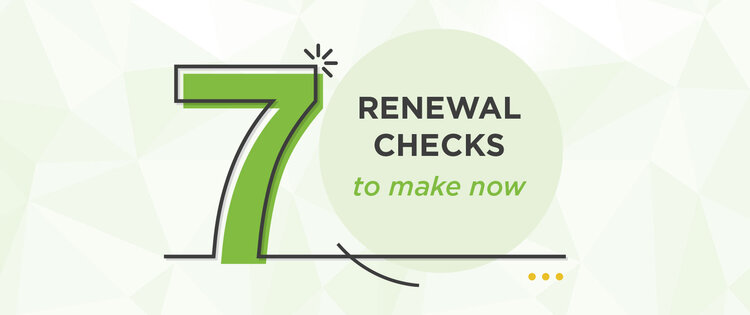Every company wants high retention—but if your bar for success is simply keeping your customers, you’re missing key opportunities to grow revenue and protect your enterprise value.
Having a high retention rate isn’t enough in this economy. As logo growth becomes more difficult and customers face pressure to cut costs, taking a critical look at your renewals can be a strategic and surprisingly profitable opportunity.
Make these 7 renewal checks to ensure retention success.
#1: Check the bill
Renewals are an opportunity to ensure your customers are being billed correctly. Have you activated or deactivated any discounts? Are you overcharging (or undercharging) compared to the contract? Leading companies often audit the most recent bill prior to renewal, so they can ensure renewal accuracy and proactively address any issues.
#2: Check the usage
Low usage may be an indicator of potential churn—and usage is critical to review when it comes to retention. Those with tiered or transactional facets of their pricing model need to pay extra attention to this step. When the time for renewals arrives, make sure the customer is being billed at the correct tier and is meeting any minimums (revenue, volume, etc.) in the contract. You should also consider offering discounts in exchange for raising the minimum, and extending the term to lock in recurring revenue and increase predictability.
#3: Check the price
Have you reviewed customer pricing? Comparing the current price to the current list price, similar customers, and recent deals is a smart tactic. For those customers with below-market pricing, take advantage of price uplift provisions to bring offerings up to par. Offer modest discounts in exchange for multi-year renewals to those customers with obviously inflated pricing.
#4: Check the product footprint
Leading companies are constantly optimizing the product footprint of each customer during renewals. This is an ideal time to check for outdated product offerings or products that can be easily migrated to subscription models. Research how your customer is utilizing what you offer. Audit the current footprint to see how it compares to the footprint of customers that have purchased similar products or are in the same industry.
#5: Check the terms
Are your customers on outdated terms? Maybe they’ve been acquired via M&A. It’s important to check for any red flag terms you need to address. Examples include Termination for Convenience and the ability to uplift prices in future years. One customer derived revenue by blinding certain data from customers to create benchmarks. They used renewals to address any restrictions on this ability, which ultimately added significant enterprise value.
#6: Check the quote
Companies can lose 1 – 2% of revenue simply because their customers have dozens (or hundreds!) of complex products and things are left off the renewal quote. In the best cases, this leads to companies waiving fees for a certain period. Worst case scenario? The product is used for a full year and the company is never billed. If the customer audits the renewal quotes and uncovers errors that were never on your radar, you run the risk of eroding trust.
#7: Check the productivity
Many organizations have high retention in spite of their renewal process, not because of it. It can be very challenging to work renewals. The information you need—including usage, billings, contracts and entitlements—can be spread across dozens of systems. Even if it’s all in one CRM, it likely isn’t organized or streamlined that lets a rep take action. We’ve consistently seen account execs spending 14 – 35% of their time hunting for this information, depending on the customer segment. In fact, many companies have a dedicated “renewal administration” team responsible for compiling this information. Even for high retention companies, this level of inefficiency can hamstring teams as cost pressure grows.
Making these renewal checks can add revenue and lay the foundations of growth where you haven’t seen it before. Here at Pramata, we’re focused on helping companies implement these checks and more to automate and optimize renewal contracts. With Pramata, you don’t need to leave renewal checks to chance. Pramata empowers legal, revenue and finance teams to make the right decisions at key revenue moments to improve profitability. Explore how we can close the data gaps and connect with Pramata today.



